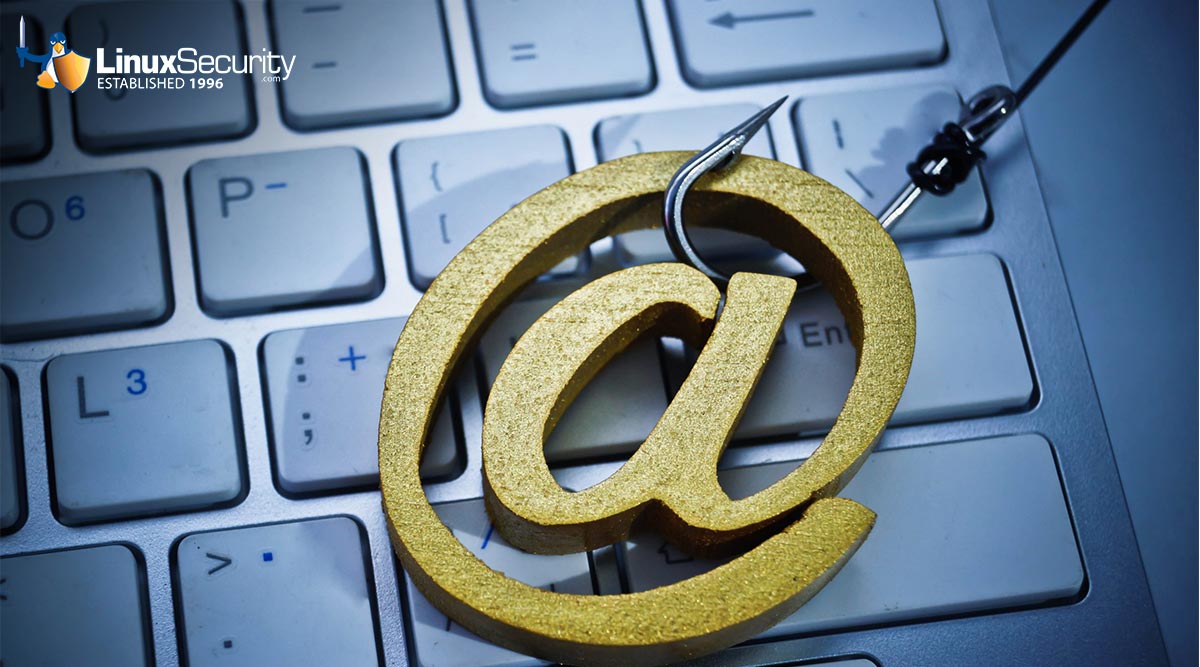No Phishing Allowed: Building a Culture of Cybersecurity Smarts

Remember when you were sent an email from a purported "bank" informing you of suspicious transactions? Phishing attacks - those deceptive attempts at stealing your information through deception - can be overwhelming and potentially stressful, but not with cybersecurity awareness!
Developing a collective culture around cybersecurity awareness can turn these "phishing for trouble" emails into collective eye rolls rather than cause anxiety among internet denizens. Let’s delve into phishing, why it is such a problem for organizations, and practical measures organizations can implement to increase cybersecurity awareness and strengthen their digital security posture to protect against phishing attacks.
What is Phishing, and Why Should We Care About This Threat?
 Imagine this: an email purporting to be from one of your favorite online stores offers you an irresistible discount that you simply must have. So you click through, enter your credit card information to "claim" it, and WHAM! Your data has just entered the wrong hands (not the kind you would want it with!). Phishing emails (and text messages, phone calls, and even phone numbers - phishers can be clever!) are designed to trick people into disclosing sensitive data or clicking malicious links, which could result in stolen passwords, bank accounts being depleted, and other damaging repercussions.
Imagine this: an email purporting to be from one of your favorite online stores offers you an irresistible discount that you simply must have. So you click through, enter your credit card information to "claim" it, and WHAM! Your data has just entered the wrong hands (not the kind you would want it with!). Phishing emails (and text messages, phone calls, and even phone numbers - phishers can be clever!) are designed to trick people into disclosing sensitive data or clicking malicious links, which could result in stolen passwords, bank accounts being depleted, and other damaging repercussions.
Here is an example of just how sneaky these phishers can be: One of my friends almost fell victim to an email that appeared from Netflix. The email claimed an issue with her payment information and instructed her to click a link to "update" it. Luckily, she double-checked the sender's address (it didn't quite match) before clicking through and thus avoided an impending data disaster.
Businesses are just as vulnerable to phishing attacks. A recent news story detailed how one such company lost significant funds due to a phishing email purporting to come from a trusted vendor. When opened, the email contained a malicious attachment with an invoice that downloaded malware onto their network.
Phishing attacks can have devastating financial and emotional repercussions for individuals and organizations. Therefore, we must remain alert to threats like these and take proactive steps to safeguard ourselves and our organizations against potential dangers.
Building a Culture of Cybersecurity Smarts: It's Not Just About Boring Training Videos
Let's face it: traditional security training can be about as exciting as watching paint dry. But building a culture of cybersecurity awareness goes way beyond a one-time snoozefest. We're talking about fostering a shared responsibility for online safety, where everyone – from the CEO to the intern – is on the same page. Here's how we can make it happen:
- Leaders Who Walk the Walk, Not Just Talk the Talk: Imagine your boss championing cybersecurity awareness – pretty cool, right? Leaders who openly discuss online safety and integrate security best practices into company policies set the tone for everyone else. They can initiate phishing prevention training sessions, lead by example with good cyber hygiene practices, and make clear that security is a top priority.
- Learning Shouldn't Feel Like Homework: Ditch the outdated training manuals! Gamified simulations, interactive workshops, and bite-sized online modules can keep employees engaged and make learning about cybersecurity fun (not fun, but less painful). Consider incorporating real-world scenarios and case studies to make the training relatable. Employees might find it helpful to see examples of recent phishing attempts and how they were identified.
- Real-World Scenarios, Not Fake News: Instead of memorizing a list of red flags (which phishers are constantly changing anyway), train employees to identify suspicious elements in emails. This could involve urgency, generic greetings, odd grammar, and links that look fishy (pun intended). Encourage employees to think critically about the content of the email and the sender's identity. Does the email address seem legitimate? Is the tone consistent with how the sender usually communicates?
Championing Security in Open-Source Projects
 In the vast and collaborative world of open source, security becomes a collective responsibility. It is not only about the code written but also about the practices followed and the culture fostered within communities. Leaders in open-source projects play a critical role in setting the tone for how security is addressed.
In the vast and collaborative world of open source, security becomes a collective responsibility. It is not only about the code written but also about the practices followed and the culture fostered within communities. Leaders in open-source projects play a critical role in setting the tone for how security is addressed.
Leaders can emphasize security in open-source projects and the communities surrounding them in the following ways:
- Security by Design: Strong leaders can advocate for and implement security-by-design principles from the start of the project. This involves integrating security into the software development lifecycle, such as conducting code reviews with a security focus and using static and dynamic code analysis tools.
- Establishing a Security Workgroup: Open source projects can benefit from having a dedicated team or workgroup focusing on security issues. Leaders can initiate this by identifying volunteers or contributors with a keen interest in security to form a task force responsible for identifying security vulnerabilities, developing patches, and disseminating information on best practices.
- Contributor Guidelines with Security Focus: Project leaders should ensure that their contribution guidelines include sections on security. By providing clear instructions on how to contribute to the project securely, they set a standard that helps prevent vulnerabilities at the source.
The Importance of Transparency and Disclosure
Leadership in open-source projects entails a commitment to transparency, especially regarding security. When a vulnerability is discovered, it's crucial to disclose it responsibly:
- Clear Vulnerability Disclosure Policies: Develop a clear policy for reporting, reviewing, and disclosing vulnerabilities. Encourage users and contributors to report security issues and provide a secure channel.
- Security Updates and Patch Releases: Communicate regularly with the user community about security updates, patches, and releases. Make this information easily accessible, ensuring users can quickly protect themselves against known vulnerabilities.
- Strengthening Community Trust: By showing that the leadership is proactive in managing security, trust within the community is reinforced. This encourages a more security-minded contribution base and user community.
Encouraging Best Practices Through Example
Leadership in open-source projects is as much about setting precedents as it is about governance. When leaders uphold high standards for security, the entire community is inspired to follow. This encompasses advocating for secure coding practices and involves using and endorsing tools that help maintain the project's integrity. Here’s how leaders can set a benchmark for security practices by leveraging open-source tools:
Embracing Open Source Security Tools
In the spirit of open source, numerous community-developed tools are at the forefront of software security. These tools provide functionalities ranging from static code analysis to network monitoring and are essential for safeguarding projects against common vulnerabilities.
Static Code Analysis Tools
- SonarQube: An open-source platform for continuously inspecting code quality, SonarQube can detect bugs, vulnerabilities, and code smells across several programming languages. Leaders can integrate SonarQube into their CI/CD pipeline to ensure code is scrutinized for security issues before merging.
- Brakeman: Specifically designed for Ruby on Rails applications, Brakeman is a static analysis tool that scans Rails applications for vulnerabilities and security issues. It can be used as part of the development process to catch potential security flaws early on.
Network Security and Monitoring
- Wireshark: As a network protocol analyzer, Wireshark is invaluable for troubleshooting network issues, but it's also a powerful tool for analyzing the security of network protocols. Open-source leaders can use Wireshark to educate contributors on the importance of secure network practices.
- Snort: A free network intrusion detection system (NIDS), Snort can perform real-time traffic analysis and packet logging on IP networks. It helps detect probes or attacks, including operating system fingerprinting attempts, semantic URL attacks, and buffer overflows.
Vulnerability Scanning and Management
- OpenVAS: The Open Vulnerability Assessment System offers a framework of services and tools for vulnerability scanning and management. Regular project infrastructure scans can uncover vulnerabilities before attackers exploit them.
- Clair: An open-source project designed by CoreOS, Clair statically analyzes vulnerabilities in application containers. With the rise of containerized applications, using Clair can help maintainers secure their projects' dependencies.
Leading by Example
Leaders of open-source projects can influence the community by not only using but also sharing insights gained from tools like SonarQube and Wireshark—including how these were integrated into CI/CD processes or case studies on how Wireshark helped resolve security issues—with their peers. Furthermore, leadership may involve giving back by contributing to these tools, either through improving features or developing plugins explicitly tailored to the project's needs.
Empowering Employees to Be Our Digital Bodyguards - Because We All Need One!
 Think of your employees as the first defense against those pesky phishing attempts. By equipping them with the right skills, we can turn them into digital security ninjas:
Think of your employees as the first defense against those pesky phishing attempts. By equipping them with the right skills, we can turn them into digital security ninjas:
- Spotting the Phish Factor: Train employees to recognize common phishing tactics. Think, "Is this email really from my bank, or is it just trying to be?" Encourage a healthy dose of skepticism when dealing with emails and online requests. Phrases like "urgent action required" or "limited-time offer" can be red flags.
- Verification is Key: Hovering over a link to see the actual URL (without clicking on it!) or contacting the sender directly through a trusted channel (like a phone number you know is legit) are simple steps that can help verify an email's legitimacy. It's always safer to err on the side of caution. If something about an email feels off, it probably is.
- Security Beyond the Office Walls: Cybersecurity awareness shouldn't stop at the office door. Encourage employees to extend these practices to their personal lives. Sharing educational resources about creating strong passwords and securing home Wi-Fi networks can go a long way. Consider offering workshops or webinars for employees and their families to promote good cyber hygiene habits in everyday life.
- Phishing Champions: Identify enthusiastic and tech-savvy employees who can act as "phishing champions" within their teams. These champions can help answer questions, share best practices, and keep cybersecurity awareness among their colleagues.
How Can Organizations Build a Culture of Open Communication and Trust?
A crucial element of a strong cybersecurity culture is open communication and trust. Employees should feel comfortable reporting suspicious emails or concerns about online security without fear of reprisal. This can be achieved by:
- Establishing Clear Reporting Channels: Make it easy for employees to report suspicious activity. This could involve setting up a dedicated email address, a hotline, or an anonymous reporting system.
- Positive Reinforcement: Recognize and reward employees who report suspicious emails or identify potential security risks. This shows appreciation for their vigilance and encourages others to raise concerns.
- Focus on Learning: When a phishing attempt is reported, use it as a learning opportunity for everyone. Analyze the email, discuss the red flags, and share this information with the broader team.
By fostering a culture of open communication and trust, we can create a safe space for employees to ask questions and share concerns, ultimately strengthening our overall cybersecurity posture.
Our Final Thoughts: Keeping Our Digital World Safe, One Email at a Time
Cybersecurity awareness is an ongoing battle, but we can create a culture of online safety by working together. Let's make "No Phishing Allowed" a reality and turn those phishing attempts into a collective sigh of relief (and maybe a little laughter at how transparent they've become). Remember, everyone has a role in keeping our digital world safe. So, stay vigilant, stay informed, and let's outsmart those phishers together!


















